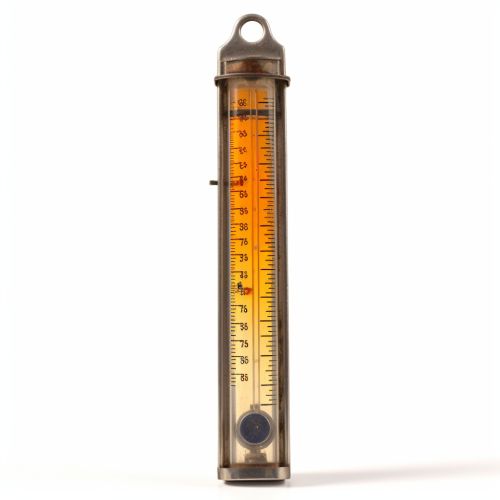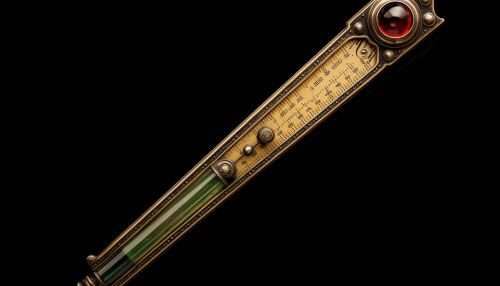Thermometry
Introduction
Thermometry is the scientific study of temperature measurement. It encompasses a wide range of techniques and devices used to measure the temperature of a body or substance. The science of thermometry has evolved significantly over the centuries, with the development of increasingly accurate and sophisticated instruments.
History of Thermometry
The history of thermometry dates back to the ancient Greeks, who were the first to understand the concept of temperature. However, it was not until the 16th and 17th centuries that significant advancements were made in the field of thermometry.


The first true thermometer was invented by Galileo Galilei in the late 16th century. This device, known as a Galileo thermometer, used the principle of buoyancy to measure temperature changes. However, it was not very accurate and was soon replaced by more advanced devices.
In the 17th century, the mercury-in-glass thermometer was invented by Daniel Gabriel Fahrenheit. This device was far more accurate than its predecessors and is still widely used today. Fahrenheit also introduced the Fahrenheit scale, which is still used in some countries.
In the 18th century, the Celsius scale was introduced by Anders Celsius. This scale, which is based on the freezing and boiling points of water, is now the most widely used temperature scale in the world.
Principles of Thermometry
Thermometry is based on the principles of thermodynamics, which is the study of heat and temperature and their relation to energy and work. There are several key principles that underpin thermometry:
- The Zeroth Law of Thermodynamics: This law states that if two systems are each in thermal equilibrium with a third system, then they are in thermal equilibrium with each other. This principle allows for the comparison of temperatures between different systems.
- The First Law of Thermodynamics: This law states that energy cannot be created or destroyed, only transferred or changed from one form to another. This principle is used in calorimetry, a type of thermometry that measures the heat of chemical reactions or physical changes.
- The Second Law of Thermodynamics: This law states that heat always flows from a body of higher temperature to a body of lower temperature. This principle is used in thermocouples, a type of thermometer that measures temperature based on the voltage generated by the heat flow between two different metals.
Types of Thermometers
There are many different types of thermometers, each with its own advantages and disadvantages. Some of the most common types include:
- Mercury-in-Glass Thermometer: This is a traditional type of thermometer that uses the expansion and contraction of mercury to measure temperature. It is accurate and reliable, but can be dangerous if the glass breaks and the mercury is released.
- Alcohol Thermometer: This type of thermometer uses alcohol instead of mercury. It is safer than a mercury thermometer, but not as accurate.
- Digital Thermometer: This type of thermometer uses electronic sensors to measure temperature. It is very accurate and can provide readings quickly.
- Infrared Thermometer: This type of thermometer measures temperature by detecting the infrared radiation emitted by an object. It can measure temperature from a distance, making it useful for measuring the temperature of moving or dangerous objects.
- Thermocouple: This type of thermometer uses the Seebeck effect to measure temperature. It is very accurate and can measure a wide range of temperatures.
Applications of Thermometry
Thermometry has a wide range of applications in many different fields. Some of the most common applications include:
- Medicine: Thermometers are used to measure body temperature in order to diagnose illness.
- Meteorology: Thermometers are used to measure air temperature in order to predict weather patterns.
- Industry: Thermometers are used to monitor and control the temperature of industrial processes.
- Cooking: Thermometers are used to ensure that food is cooked to the correct temperature.
- Science: Thermometers are used in a wide range of scientific experiments and research.
Future of Thermometry
The future of thermometry is likely to see the development of even more accurate and sophisticated devices. Advances in technology, such as nanotechnology and quantum computing, could lead to the development of new types of thermometers that can measure temperature with unprecedented accuracy.
See Also
- Thermodynamics - Temperature - Heat - Energy
